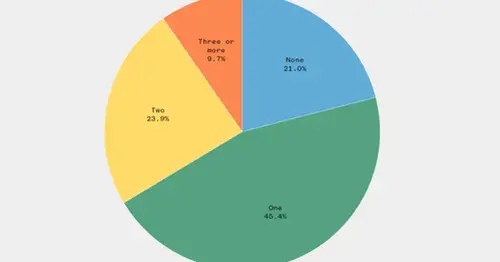
The debt ceiling bill makes food benefits harder to get. Here’s who could suffer
The bipartisan debt-ceiling bill President Joe Biden signed into law Saturday includes stricter work requirements for those receiving food assistance, along with new exemptions that could widen access for others.
Under the new rules, the age of participants in the Supplemental Nutrition Assistance Program, or SNAP, who need to provide proof of work has been raised from 18-49 to 18-54. That means many poor people in their early 50s without disabilities or dependents to care for could become ineligible or face new bureaucratic hurdles in proving they qualify.
At the same time, the bill also exempts veterans, homeless people and young people aging out of foster care from SNAP work requirements, a carve-out the White House and Democrats have touted as a victory. (Nonpartisan federal researchers project that the debt limit bill’s changes would slightly expand SNAP rolls on balance by about 0.2%, or around 78,000 people, in an average month.)
Many conservative leaders and experts at think tanks argue that the tighter requirements are necessary to move more unemployed people into the workforce, especially in a historically tight labor market that keeps adding jobs at a surprising clip. But an NBC News analysis of Census Bureau and other data paints a more complicated picture.
For starters, most families who participate in SNAP — in which the average monthly benefit comes in at about $230 per person — are already working, and poverty — not unemployment — is the major challenge they face.
More than 42.5 million people rely on federal food benefits, federal data shows, and 4 out of 5 households in the program have at least one family member working.
In some cases, a family might have multiple adults, some working and some not. Experts such as Ed Bolen at the Center on Budget and Policy Priorities, a left-leaning Washington think tank, say that in such families, the adults not in the workforce are often involved in other forms of labor, like child or elder care. Angela Rachidi of the American Enterprise Institute, a center-right Washington think tank, said data on households of multiple able-bodied adults without children is lacking, but she said she believes the share would be small.
Noting that most families in poverty don’t stay there long, labor economist Kathryn Anne Edwards said, “This idea of a nonworking underclass is very much a cultural myth.” Edwards pointed to gig workers, as well as those who work other jobs with unpredictable scheduling, as typical types of SNAP recipients — people who need the program to get them and their families through rough patches.
“It could be that you’re cycling through jobs. It could be that your hours go up or down. It could be that you make overtime, you lose overtime,” Edwards said.
Bolen, director of SNAP Strategies at the Center on Budget and Policy Priorities, said poverty share and SNAP participation track each other, rising and falling in tandem. The unemployment rate, on the other hand, often diverges from SNAP enrollment.
Many Republican lawmakers and conservative economists say the data is incomplete. Rachidi, a senior fellow at the American Enterprise Institute, pointed to an Agriculture Department report that found the average length of SNAP eligibility for all participating households was 15 months. That figure includes the elderly and disabled people who may be certified for longer periods.
“Length of stay is what is important,” Rachidi said, adding that her research indicates roughly 1 in 4 SNAP recipients are able-bodied adults who “seemingly have no other reason not to be working.”
But even length-of-stay data can be misleading. While, for example, 16.4% of American households participated in SNAP in an average month last year, many of the households getting benefits in January may not necessarily be the same ones getting benefits in June.
That idea can be tested by looking at data about nonelderly, nondisabled SNAP recipients from a Census Bureau panel covering the years 2009 to 2013. Even under the strictest beneficiary conditions, the pool of unemployed people receiving SNAP benefits in January 2012 — including those with working spouses or child and elder care responsibilities — shrank by about 25% by the end of the year, indicating dynamism in SNAP eligibility and employment.
As the Biden administration noted repeatedly during debt limit talks, work requirements for safety net programs have been a feature of the SNAP program for decades, enjoying bipartisan support — including from Biden when he was a senator — when President Bill Clinton signed sweeping welfare reforms into law in 1996. But Democrats have broadly soured on the policies in recent years, even as Republicans in Congress and at the state level continue to pursue ways to tighten them.
House Republicans included more stringent requirements in the party-line debt ceiling bill they passed in April, and Speaker Kevin McCarthy, R-Calif., said late last month that the rules “let people go back to work.”
However, Bolen, of the Center on Budget and Policy Priorities, said, “Folks are going to want to work, because they’re going to get a lot more in paid employment than they’ll get through SNAP.”
He likened the program to a “bridge in between jobs” for many people who rely on it intermittently, particularly those in “volatile industries” with high turnover.
Source: https://www.nbcnews.com/data-graphics/data-work-requirements-food-benefits-snap-rcna86440






